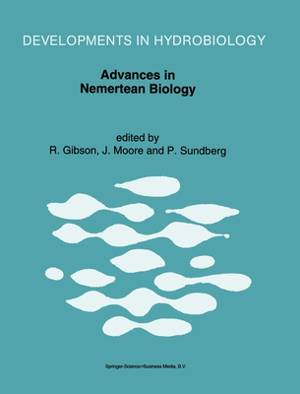
- Afhalen na 1 uur in een winkel met voorraad
- Gratis thuislevering in België vanaf € 30
- Ruim aanbod met 7 miljoen producten
- Afhalen na 1 uur in een winkel met voorraad
- Gratis thuislevering in België vanaf € 30
- Ruim aanbod met 7 miljoen producten
Zoeken
Omschrijving
One: Ecology.- Life cycles of nemerteans that are symbiotic egg predators of decapod Crustacea: adaptations to host life histories.- Nemertea inhabiting the Haploops (Amphipoda) community of the northern Øresund with special reference to the biology of Nipponnemertes pulcher (Hoplonemertea).- Aspects of the biology of Pantinonemertes californiensis, a high intertidal nemertean.- The infestation and dispersion patterns of Carcinonemertes spp. (Nemertea) on their crab hosts.- Carcinonemertes pinnotheridophila sp. nov. (Nemertea, Enopla, Carcinonemertidae) from the branchial chambers of Pinnixa chaetopterana (Crustacea, Decapoda, Pinnotheridae): description, incidence and biological relationships with the host.- Ecological studies of the nemertean fauna in an estuarine system of the northwestern Gulf of Mexico.- Two: Taxonomy and Phylogeny.- Methods of classifying nemerteans: an assessment.- Phylogeny, natural groups and nemertean classification.- Major characters and enoplan systematics.- Observations on the morphology of some North American nemertines with consequent taxonomic changes and a reassessment of the architectonics of the phylum.- A reassessment of the systematics and a proposal for the phylogeny of some cosmopolitan Lineus species (Nemertea).- A proposal for a check-list of characteristics to be used in the description of palaeonemertean species.- The genus Valdivianemertes Stiasny-Wijnhoff 1923 (Nemertea, Enopla, Hoplonemertea): nomenclatural status and proper systematic position.- Paralineopsis taki gen. et sp. nov., a littoral heteronemertean from Japan, provided with special proboscideal, circulatory and sensory organs of significance to nemertean systematics.- Riserius pugetensis gen. n., sp. n. (Nemertina: Anopla), a new mesopsammic species, and comments on phylogenetics of some anoplan characters.- Enzyme electrophoresis, genetic identity and description of a new genus and species of heteronemertean (Nemertea, Anopla) from northwestern Spain and North Wales.- Morphological variation in the palaeonemertean Tubulanus annulatus (Montagu 1804).- Three: General Biology.- Evidence for a FMRFamide-like peptide in the heteronemertine Cerebratulus lacteus Leidy.- Molecular approaches to the study of evolution and phylogeny of the Nemertina.- The influence of light and sea water temperature on the reproductive cycle of Lineus ruber (Heteronemertea).- Patterns of trace metal accumulation in Swedish marine nemerteans.
Specificaties
Betrokkenen
- Auteur(s):
- Uitgeverij:
Inhoud
- Aantal bladzijden:
- 296
- Taal:
- Engels
- Reeks:
- Reeksnummer:
- nr. 89
Eigenschappen
- Productcode (EAN):
- 9780792324829
- Verschijningsdatum:
- 30/09/1993
- Uitvoering:
- Hardcover
- Formaat:
- Genaaid
- Afmetingen:
- 203 mm x 254 mm
- Gewicht:
- 834 g

Alleen bij Standaard Boekhandel
+ 302 punten op je klantenkaart van Standaard Boekhandel
Beoordelingen
We publiceren alleen reviews die voldoen aan de voorwaarden voor reviews. Bekijk onze voorwaarden voor reviews.











